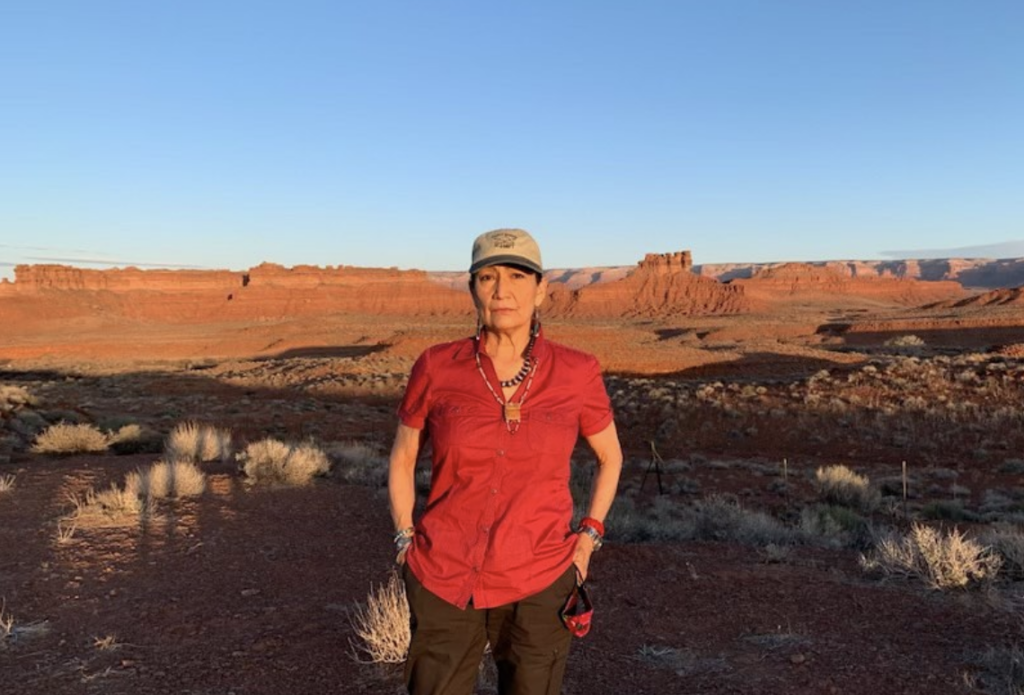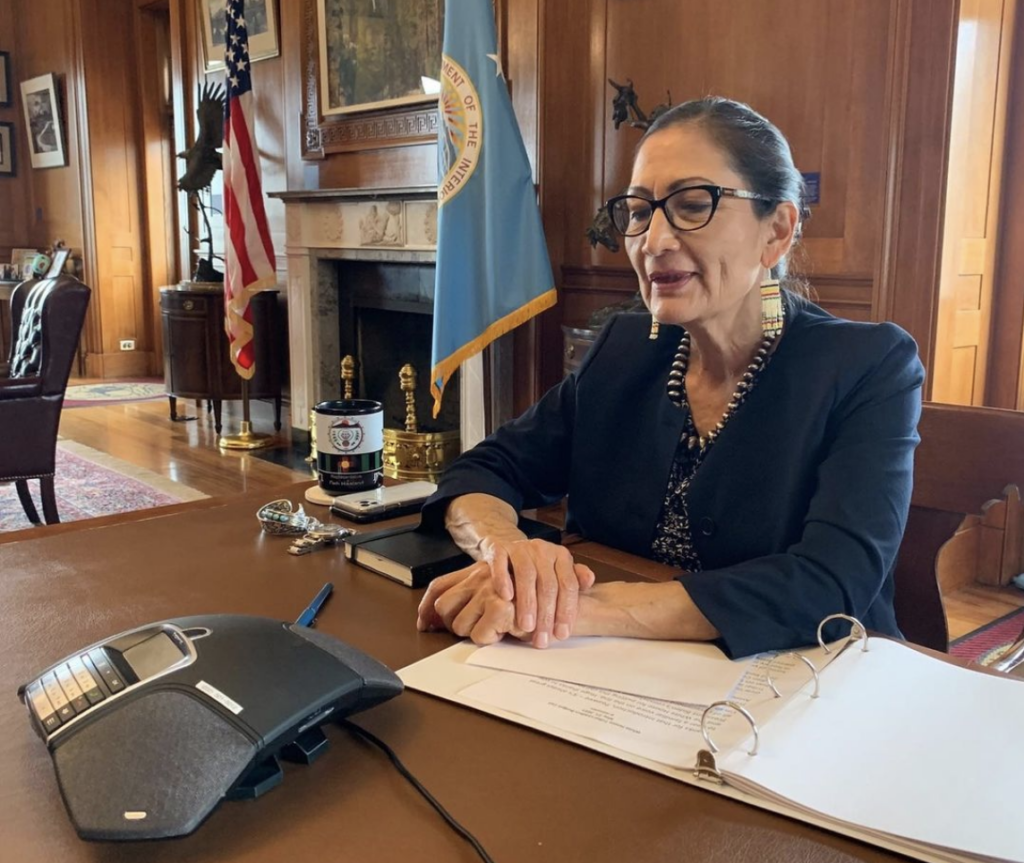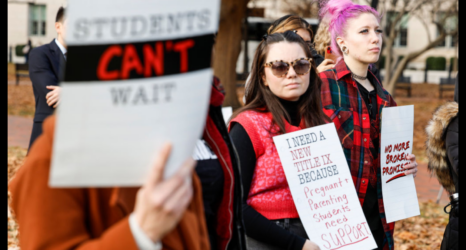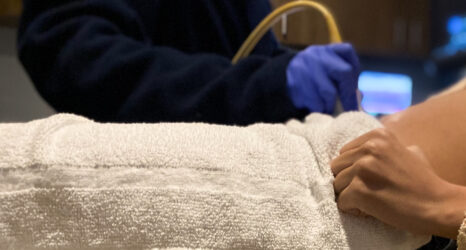
This article originally appeared in The Daily Hampshire Gazette. It has been republished with permission.
Last March, U.S. Representative Deb Haaland (D-N.M.)—a member of New Mexico’s Laguna Pueblo—became the first Native American Cabinet secretary in U.S. history. President Biden appointed Haaland to be secretary of the Interior Department—the federal agency responsible for managing and conserving most federal lands and natural resources as well as administering programs related to Native Americans, Alaska Natives and Native Hawaiians.
Last Friday, Secretary Haaland issued an order formally declaring the word “squaw” a derogatory term and creating a Derogatory Geographic Names Task Force to rename more than 650 valleys, lakes, creeks and other sites on federal lands that use the word.
“Racist terms have no place in our vernacular or on our federal lands. Our nation’s lands and waters should be places to celebrate the outdoors and our shared cultural heritage—not to perpetuate the legacies of oppression,” said Haaland.
In California alone, the word is used to name 87 geographic features, including valleys, peaks, canyons, mountains, hills, lakes, creeks, hollows, springs, flats, rocks, gulches, a ridge and a prairie.
The task force will engage in tribal consultation and consider public feedback on proposed name changes.
Haaland’s order also creates an Advisory Committee on Reconciliation in Place Names to broadly solicit, review and recommend changes to other derogatory geographic and federal land names. The committee will include representation from Indian tribes, tribal and native Hawaiian organizations, civil rights, anthropology and history experts, and members of the general public.
In the original Algonquian language, the word “squaw” meant “woman,” but settler colonists began using it as a derogatory term for Native women as early as the 1600s.
“The term has historically been used as an offensive ethnic, racial, and sexist slur, particularly for Indigenous women,” read an Interior Department press release.
While several states have passed laws prohibiting the use of the term in place names, including Montana, Oregon, Maine and Minnesota, Congress has for years failed to pass a bill that would address derogatory names on federal lands.
This effort to address racist place names is one of several actions Secretary Haaland is taking to address discrimination and violence against Indigenous women and communities. In April, she announced the formation of a new Missing & Murdered Unit (MMU) within the Bureau of Indian Affairs Office of Justice Services (BIA-OJS) to provide leadership and direction for cross-departmental and interagency work involving missing and murdered American Indians and Alaska Natives. According to the National Institute of Justice, 84 percent of Native women experience violence in their lifetimes and 56 percent experience sexual violence.
“Violence against Indigenous peoples is a crisis that has been underfunded for decades. Far too often, murders and missing persons cases in Indian country go unsolved and unaddressed, leaving families and communities devastated,” said Haaland. “The new MMU unit will provide the resources and leadership to prioritize these cases and coordinate resources to hold people accountable, keep our communities safe, and provide closure for families.”
This initiative follows her past work in Congress to address these issues. In January of 2019, Haaland and Sharice Davids—a member of the Ho-Chunk Nation from Kansas—were elected to the U.S. House of Representatives as the first Native American women ever to serve in Congress. Shortly after being sworn into Congress, Haaland and Davids introduced two bills—Savanna’s Act and the Not Invisible Act—to improve government responses to the high rate of missing and murdered Indigenous women and girls in the United States. These bills passed in 2020. As secretary of the Interior, Haaland is playing a key role in implementing these laws.

Haaland has also taken steps to address the history and harms of the U.S. government’s long-standing policies attempting to culturally assimilate Indigenous children by forcibly removing them from their families and communities and relocating them to distant residential facilities where their identities, languages and beliefs were suppressed. In June, Haaland announced the formation of a Federal Indian Boarding School Initiative to conduct a comprehensive review of federal boarding schools.
“The Interior Department will address the inter-generational impact of Indian boarding schools to shed light on the unspoken traumas of the past, no matter how hard it will be,” said Haaland. “I know that this process will be long and difficult. I know that this process will be painful. It won’t undo the heartbreak and loss we feel. But only by acknowledging the past can we work toward a future that we’re all proud to embrace.”
Through these initiatives and more, Interior Secretary Haaland is working to finally hold the U.S. government accountable not only for the derogatory place names plastered across the nation, but for its history of violence against Native American children, families and communities, as well as its failure to address the ongoing epidemic of violence against Native American women and girls.
Today, let’s give thanks for Secretary Haaland, who so powerfully shows the difference an Indigenous leader makes.
Up next:





